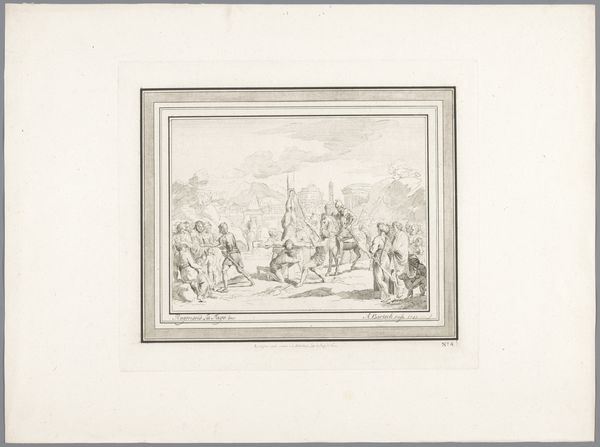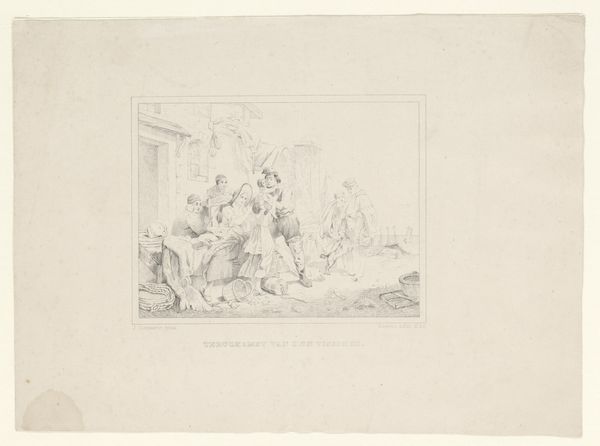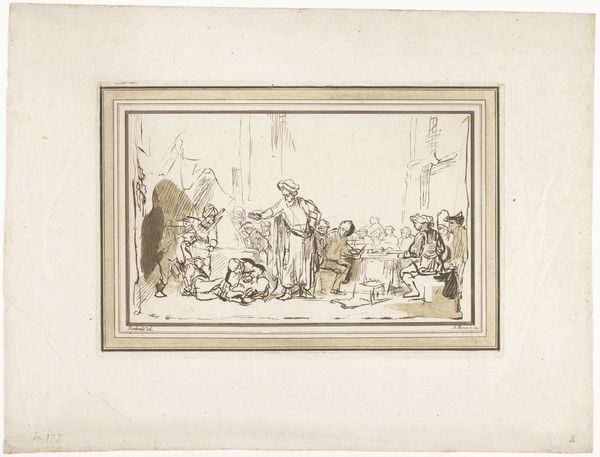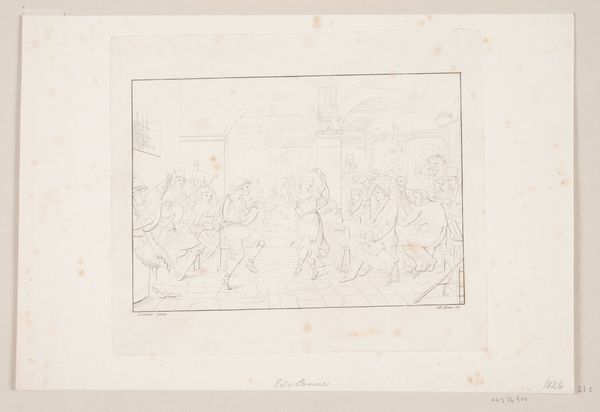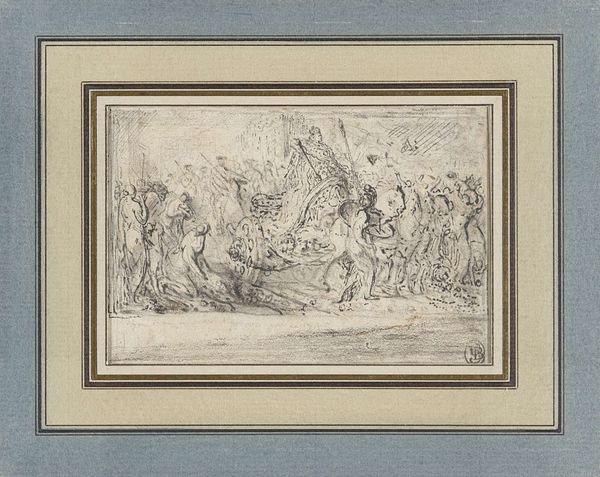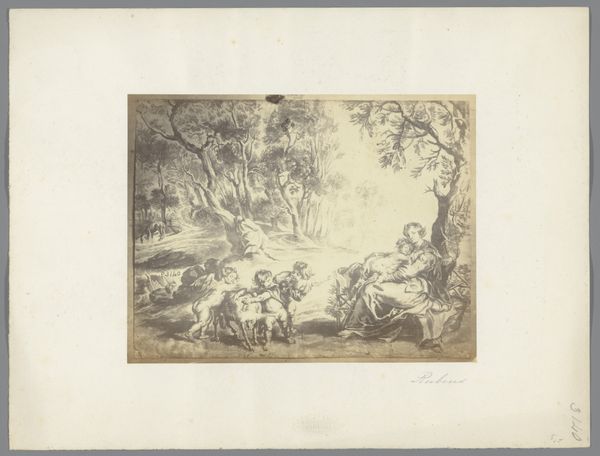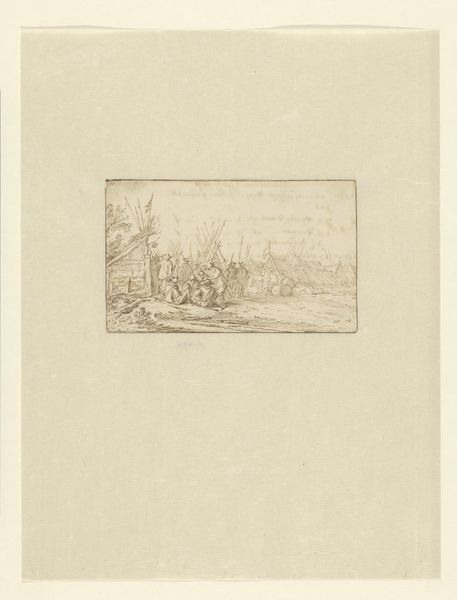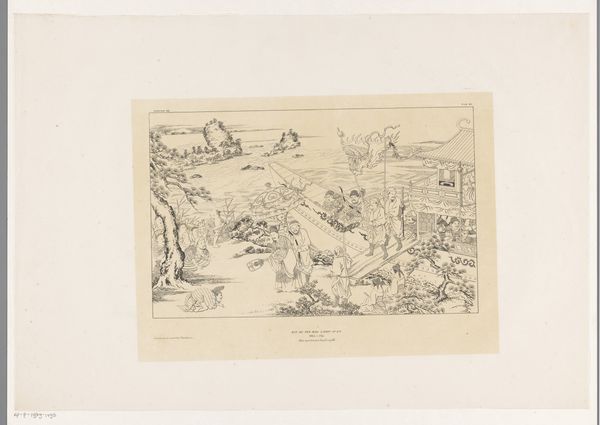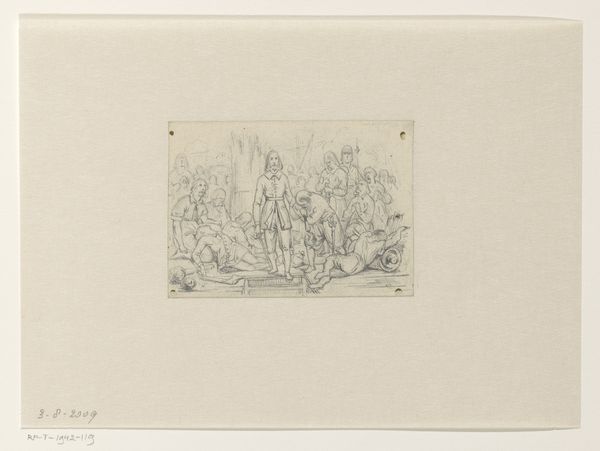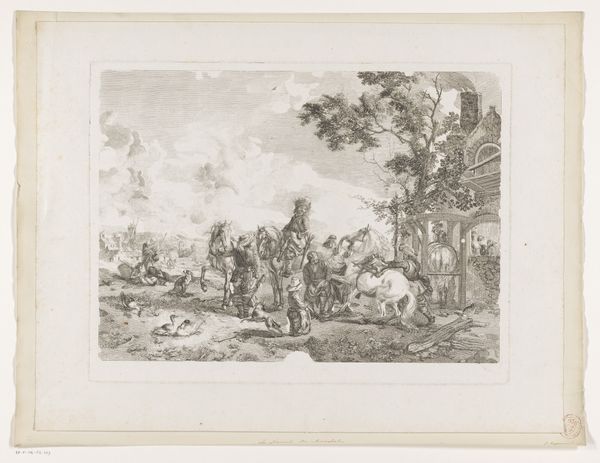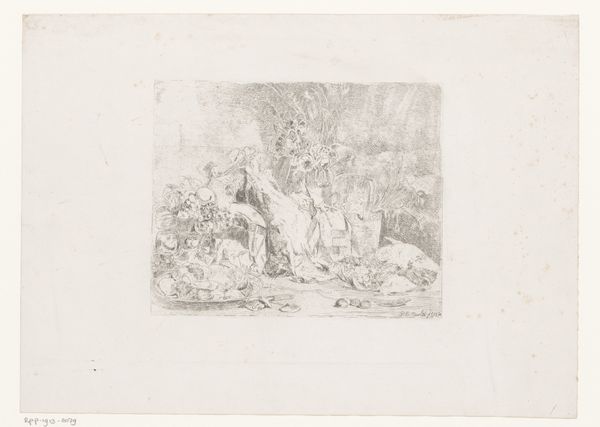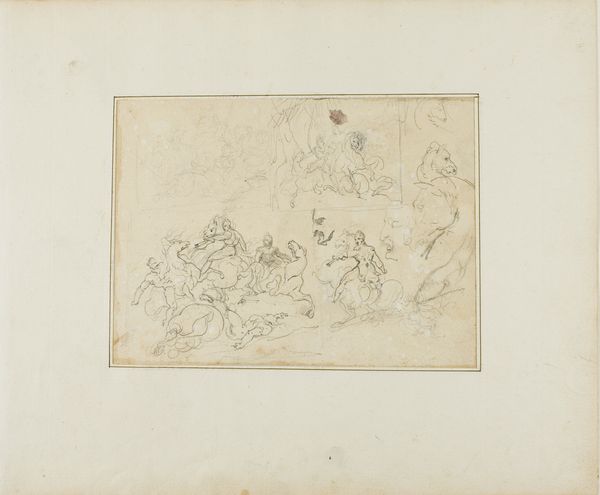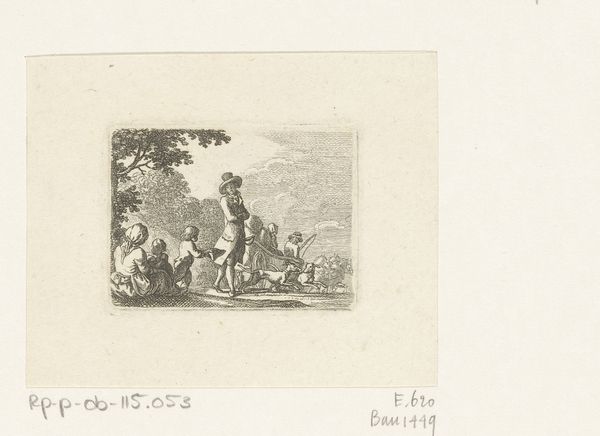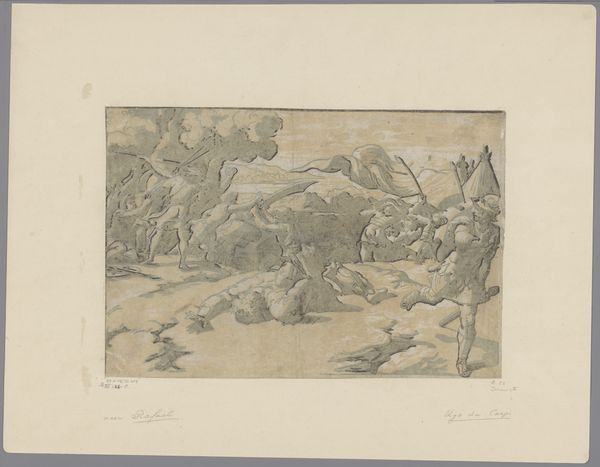
Dimensions: height 235 mm, width 313 mm
Copyright: Rijks Museum: Open Domain
Curator: This delicate print, "Engelen zorgen voor Christus," or "Angels Provide for Christ," created by Adam von Bartsch in 1783, offers a serene depiction of a biblical scene. Editor: It’s quite understated. My immediate impression is one of calmness, aided by the monochrome ink. The lines are so fine, creating almost a hazy effect. Curator: Bartsch was a prolific printmaker and art historian, and this piece is a prime example of how religious themes were often used to reinforce societal values. The depiction of angels tending to Christ speaks to themes of divine care and salvation, values highly promoted at the time. Editor: The composition guides the eye gently across the landscape. Note how Christ is positioned in the foreground, and the cluster of angels draws our focus. Then, in the background there's a gradual fading into a distant village. There is an attention to balance in organizing of forms within a single plane. Curator: Exactly. And while seemingly a personal expression of faith, such imagery also served as visual propaganda. The Church played a huge role in the lives of the majority of the population in the 18th century, as well as being involved politically and economically. Images such as this one became popular quickly and helped consolidate that dominance. Editor: The engraver's skill is impressive here; creating various tonal values with what looks like a singular application of ink. This speaks to the high degree of artistic expertise present during this historical period. Curator: Indeed. Bartsch was not only artistically skilled but was, in many ways, also helping to further and preserve dominant ideological positions through images like these. This is an exemplar of art reflecting socio-political trends of its time. Editor: Considering the work through a lens of aesthetic organization really sheds light on its emotive power. The formal arrangement clearly evokes themes of divinity. Curator: By examining artworks such as these, it helps us understand the important functions that artworks have been commissioned for by governing bodies throughout history. Editor: Seeing it both ways, it becomes a complex tapestry of technique and cultural meaning woven into one little picture.
Comments
No comments
Be the first to comment and join the conversation on the ultimate creative platform.
